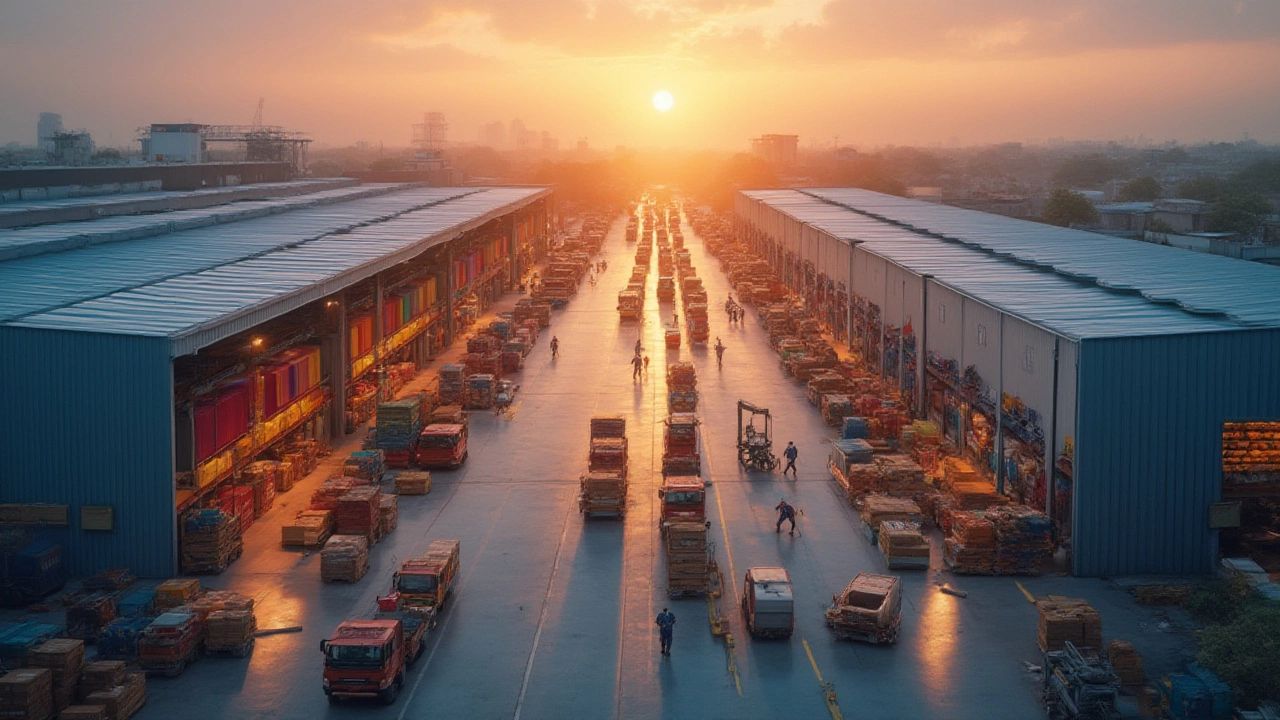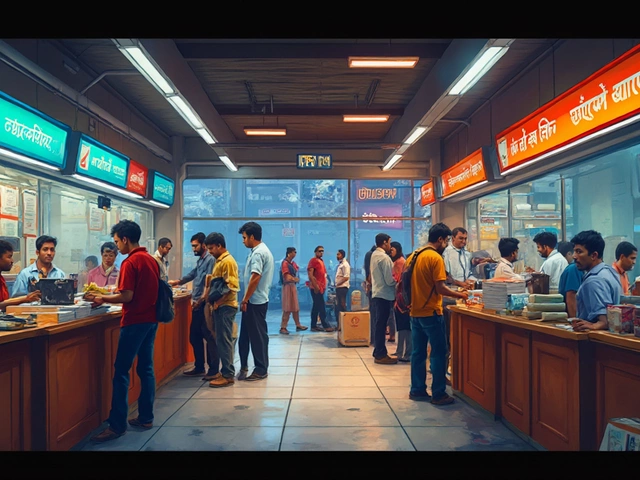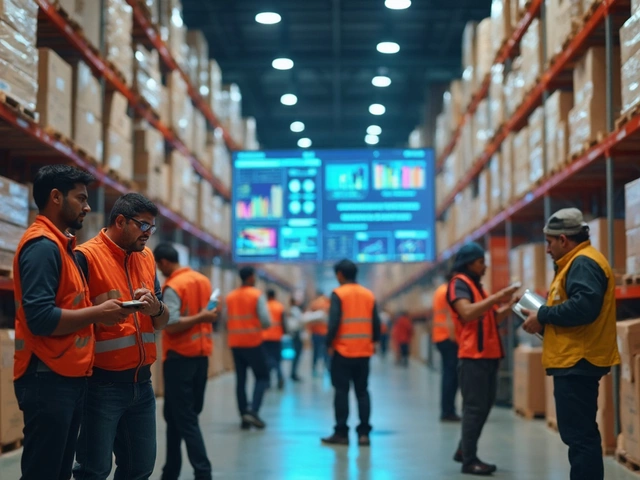You walk into a big box store in Toronto in the middle of winter and find shelves fully stocked with the latest gadgets, cozy sweaters, and imported snack foods from halfway across the globe. Ever wondered how all that stuff stays available, no matter when you show up? It’s not magic. It’s warehouses. There’s a whole world out there—giant buildings and buzzing teams—moving, sorting, and storing all kinds of products. The wild part? Not all warehouses work the same way. When you start peeling back the layers, you find three major types that quietly run the show for everything from online shopping splurges to your favourite brand’s product launches. And honestly, the differences matter more than you’d think.
Storage Warehouses: Where Products Rest
If you could peek inside an old-school warehouse, you’d probably find rows upon rows of goods sitting on pallets. These are storage warehouses—the OGs of keeping products safe until someone needs them. They’ve been around for centuries, and even with high-tech changes, their job hasn’t really changed: hold on to stuff for the long haul. What sets storage warehouses apart is their focus on security, organization, and, well, just waiting. That might sound boring, but think about classic items that don’t fly off the shelves—those bestselling books that print millions but sell at a snail’s pace, or construction supplies for projects that drag on all winter.
It’s not just about stashing things in a big room. Storage warehouses are designed for maximum protection. Ever see a cartoon with crates labeled “fragile” or “handle with care”? Real storage warehouses deal with products that need that TLC, like glassware, electronics, or even perfume—anything that can’t handle wild temperature swings or humidity. Modern facilities in Canada (including Greater Toronto) now control temperature and humidity with precision. Some have full climate-control systems, guarding things like pharmaceuticals or specialty foods. Others are built for volume—those massive concrete bunkers you spot near highways often store paper, metals, or heavy equipment.
Don’t think they’re just passive bunkers, though. Smart inventory systems keep everything organized and track what’s where. Picture barcode scanners and employees rolling by on forklifts, matching digital logs to physical racks. In busy cities like Toronto and Mississauga, automation’s taking over: robotic pickers zip through the aisles, reducing mistakes and speeding up “just-in-time” supply chains. According to Statista in 2024, North American companies spent over $9 billion automating warehouse operations, and a big chunk went straight into improving old-school storage facilities.
Most storage warehouses are “public” or “private.” Big retailers and manufacturers often run their own (“private”), while small businesses rent space from 3PLs (third-party logistics providers). Renting gives flexibility—no need to commit to an entire building if you just need a few shelves during peak holiday season. Here’s a handy breakdown of what you’ll find inside:
| Purpose | Key Features | Industries Served |
|---|---|---|
| Long-term storage | Climate control, security systems, pallet racking | Appliances, books, hardware, construction materials |
| Bulk inventory | Heavy equipment, large volume storage | Automotive, manufacturers |
| Special handling | Dust-free, temperature-sensitive storage | Pharmaceuticals, food, artwork |
Pro tip: For products that don’t spoil or need quick delivery, a dedicated storage warehouse saves money and cuts stress. But the second a customer expects next-day shipping, things get trickier—which is where other types come into play.
Distribution Centers: The Fast Lane for Product Flow
Ever click “order now” and get a text saying your package was shipped within two hours? Odds are, a distribution center made it happen. Unlike traditional storage warehouses, distribution centers aren’t just about parking stuff. They’re the nervous system of modern retail, dedicated to keeping goods moving—fast and accurately. Their job is to receive products in bulk from suppliers, quickly sort and repackage them, and ship smaller quantities out to stores, wholesale customers, or—more and more often—right to your door.
Distribution centers are huge—sometimes the size of 10 football fields. Think about Amazon’s fulfillment centers, Walmart’s regional hubs, or Loblaws’ giant facilities just outside Toronto. They operate on tight schedules. Imagine trucks rolling in at sunrise to drop thousands of products, each needing to be counted, repackaged, and loaded onto outgoing trailers before lunch. According to the Council of Supply Chain Management Professionals, the average “dwell time” for products in a distribution center is less than two days. Some centers clear inventory within just a few hours.
What keeps things running so smoothly? Tech, mostly. Modern distribution centers are a wonder of automation and process engineering. Software tracks packages down to the last barcode, and overhead scanners direct robotic carts to sort and route orders. Instead of weeks or months of storage, inventory flips constantly. Managers monitor key metrics in real-time, using dashboards to prevent bottlenecks. Ever wonder how retailers cope when a TikTok video sends a random product viral overnight? Sophisticated distribution centers reroute stock and adjust priorities on the fly.
But there’s strategy here. The goal isn’t just speed, but precision. Wrong shipments cost money—returns, refunds, and lost trust. Distribution centers specialize in “cross-docking,” where goods barely hit the floor before they’re shipped out again. This cuts storage costs and gets products into customer hands sooner. Here’s a quick snapshot of what sets distribution centers apart:
| Feature | Distribution Center | Storage Warehouse |
|---|---|---|
| Turnover Rate | Hours to days | Weeks to years |
| Tech Level | High—automated sorting, live tracking | Medium—manual or semi-automated |
| Purpose | Move items instantly | Hold items long-term |
Success tip: For any business with tight delivery windows or weekly product launches, having the right distribution center partner is non-negotiable. In Toronto’s booming food service industry, for instance, fresh and frozen goods zip through distribution centers every night to keep restaurants stocked by morning.
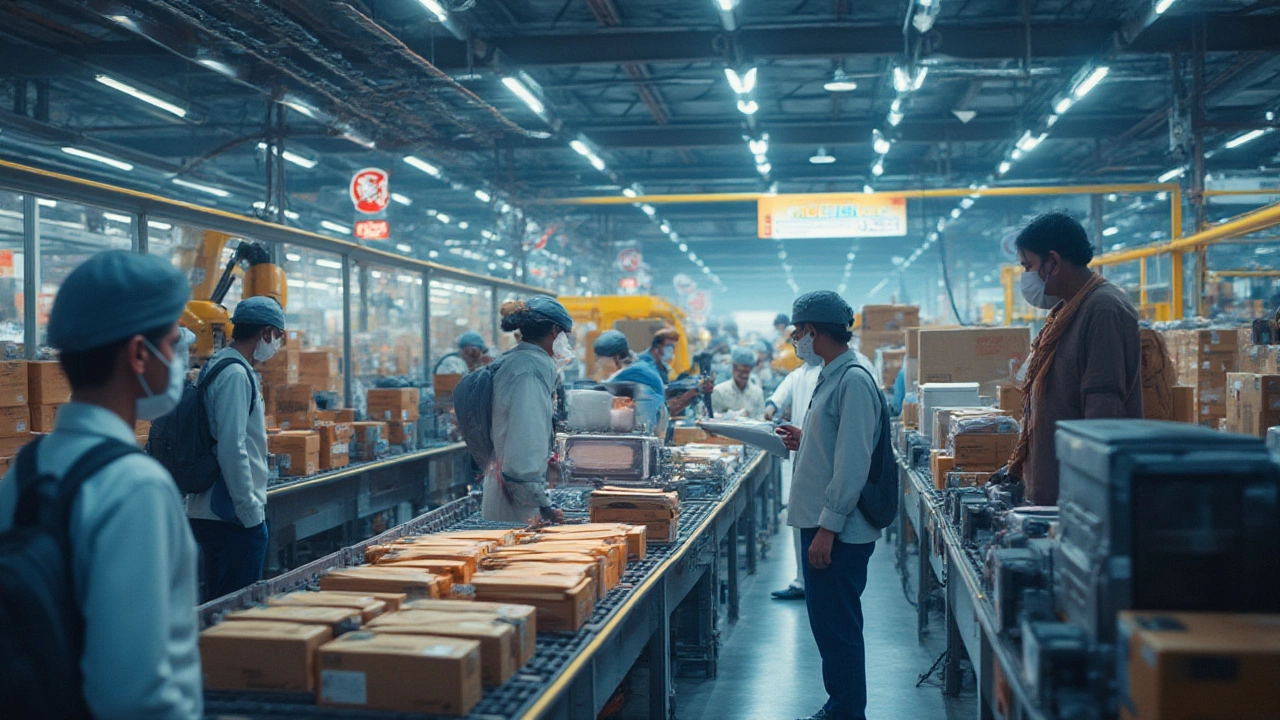
Fulfillment Centers: The Backbone of Ecommerce
Remember those online splurges I mentioned? When your order shoots from a shopping cart to your front porch in 48 hours or less, you’re seeing the magic of a fulfillment center. If there’s one thing the pandemic taught us, it’s that people now expect almost instant delivery. Fulfillment centers are built for that exact demand. They blend storage (like traditional warehouses), sorting (like a distribution center), and hands-on order picking, packing, and shipping—all under one massive roof.
Here’s where things get wild: fulfillment centers are a ballet of people and tech. Picture employees zipping around with handheld scanners, picking your order from a shelf, while software double-checks every move. Some, like Shopify’s new fulfillment sites in Ontario, use autonomous robots to grab and move bins at breakneck speed. Others specialize in extra-fast “last mile” shipping, running their own fleet of vans or working with courier partners so your order gets out the door minutes after it’s placed. Statistics Canada reported last year that ecommerce sales topped $61 billion in 2024, and almost 80% of those orders moved through fulfillment centers.
But there’s one more thing. Fulfillment centers usually offer everything a brand needs to finish an order—custom packaging, returns handling, even gift wrapping during the holidays. Small online shops love this: they can rent space and pay per shipment, letting them look like big players without needing a warehouse of their own. And the biggest operations? Amazon, Walmart, and Shopify run high-tech fulfillment centers around the clock, especially near major cities like Toronto, to keep up with “same-day” delivery pressure. Here’s a peek at what makes a fulfillment center unique:
| Service | Fulfillment Center | Distribution Center |
|---|---|---|
| Storage Duration | Short to medium (days/weeks) | Very short (hours/days) |
| Order Picking | Person-to-product or robot-to-product | Bulk case volume, automated sort |
| Value Adds | Packing, kitting, returns, custom labels | Minimal—mostly sort and ship |
Pro tip: If you run an online shop or side hustle, working with a fulfillment center lets you focus on marketing while the pros handle the packing chaos. During holiday seasons, fulfillment centers scale up—adding staff, prepping special gift services, and keeping delivery promises even as order spikes hit record highs.
How to Choose the Right Warehouse Type
You’d be surprised how many businesses get tripped up just picking where to keep their stuff. The “right” warehouse depends on the answers to three big questions: How fast do you need to move products? Do your items need special handling? Are you selling B2B (business to business), B2C (business to consumer), or both?
- If your products move slowly or are super expensive to store (like machinery or artwork), a storage warehouse with strict security or climate control usually makes sense.
- If you’re moving high volumes—especially perishable goods or products that sell quickly after launch—a distribution center is best. They shine when speed is everything, especially if you manage multi-store operations or need to juggle fast-changing inventory.
- If your business sells directly to consumers and needs hands-on order packing, try a fulfillment center. They handle shipping, returns, and sometimes even customer service. Shopify’s Network, Amazon FBA, and ShipBob are all major options in Canada in 2025.
The best approach? Many companies combine all three. Big brands keep slow-selling goods in long-term storage, cycle trendy items through a distribution center, and route ecommerce orders through a fulfillment hub. Here’s a quick stat: In a recent CBRE survey, 68% of Canadian logistics managers said their organizations used at least two warehouse types to optimize their supply chains. No surprise—consumer expectations change in a blink. The more adaptable your setup, the better you’ll handle seasonal floods or supply chain shocks.
And location does matter. Toronto’s central position makes it a magnet for all three warehouse types, with easy highway and rail access plus proximity to millions of shoppers. Picking a warehouse in or near a big city can shave days off delivery times, especially for fresh food, seasonal items, or “must-have” online products.
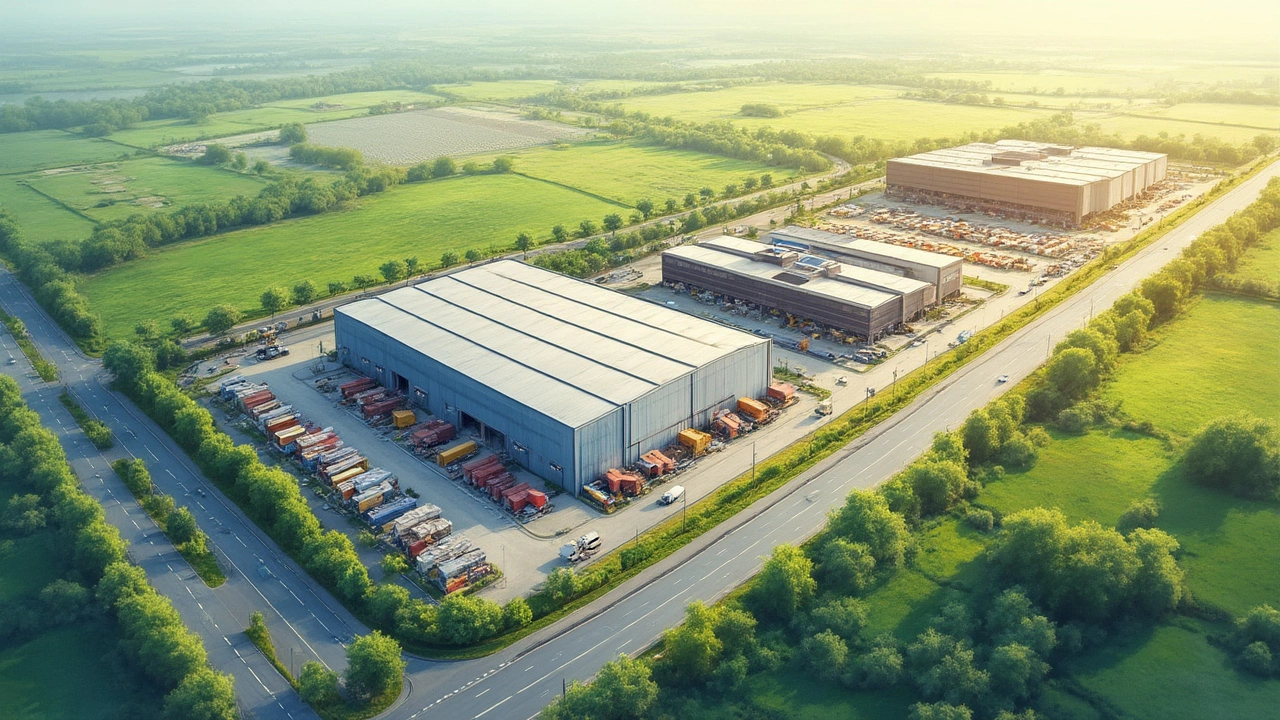
Key Trends Shaping Warehousing in 2025
Warehousing isn’t just about stacking boxes and shipping stuff anymore. Technology’s changing every part of the business, and if you’re setting up shop—or just getting curious—it’s wild to see where things are heading. Here are a few big trends worth watching in 2025:
- Types of warehouses are blending: Hybrid warehouses combine fulfillment, storage, and distribution—all in one spot. This is popular with ecommerce brands that shift between wholesale and direct-to-consumer, depending on sales spikes.
- Automation’s exploding: In Canada, more than half of new distribution centers use some kind of robotic picking, automated forklifts, or advanced scanning systems. These upgrades cut labor needs, slash errors, and boost speed.
- Eco-friendly warehousing is here: Solar panels, recycled materials, and green refrigeration systems are popping up as companies chase energy savings and meet new climate regulations. Major Toronto sites have earned LEED certification for minimizing environmental impact.
- Micro-warehousing: Ultra-small warehouses—sometimes just a few hundred square feet—are emerging in city cores or neighborhoods to promise ultra-fast local delivery. Loblaw and Amazon are trialing these in Toronto, cutting the wait for hot-ticket items to mere hours.
- Data-driven everything: Warehouses are using big data to optimize layouts, forecast demand, and even predict when equipment will fail. Smart sensors cut downtime and keep product losses near zero.
Fun fact: Around one in four Canadians orders groceries or household essentials online every month, and nearly every order touches a fulfillment or distribution center at some point along the way. It’s a reminder that no matter how invisible they seem, warehouses quietly shape how we live—and shop—every day. Even Luna, my husky mix, gets her favorite treats delivered straight from a fulfillment center now. If you find yourself marveling at how easy it’s become to get almost anything delivered to your door, remember: it all starts with picking the right warehouse, and the unsung teams working behind those walls.
